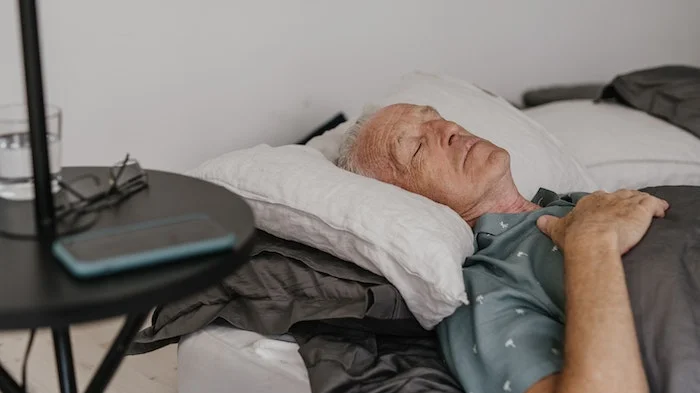Alcohol, or rather ethanol, the active ingredient that causes a person to get drunk, is processed by the liver.
The term ‘unit’ of alcohol refers to how quickly the liver breaks down the ethanol – one unit of alcohol takes one hour to process.
A glass of wine, for example, contains 2.3 units of alcohol – so would take around 2 hours for your body to process it. This can mean that, when drinking socially, for example, a few drinks can quickly become difficult for the body to process.
Alcohol poisoning can affect anyone, but is common in inexperienced drinkers, especially young people, who do not yet know their ‘limits’.
What are the symptoms of alcohol poisoning?
Below, we outline some of the symptoms of alcohol poisoning:
1. Disorientation or confusion

One of the first signs of alcohol poisoning is often seen in confusion or disorientation. A person who is experiencing the effects of alcohol poisoning may not know where they are, how they got there or what they are doing there.
They may say things that do not make sense, struggle to express coherent thoughts, or seem to be unable to understand what is said to them. It can often be distressing to see a person experiencing these symptoms, and it is vital that appropriate action is taken when they first appear.
2. Vomiting
Vomiting or throwing-up is another early sign of alcohol poisoning. Vomiting is a response from the body to the alcohol, that tries to mitigate the effects of excessive drinking by expelling the alcohol.
Vomiting can worsen the dehydration that is brought on by drinking alcohol and also has the potential to be extremely dangerous and sometimes fatal if a person were to choke on their own vomit.
A person who is experiencing symptoms of alcohol poisoning should NOT be laid on their back, and if possible, they should instead be either sat upright or laid on their side in the recovery position [1].
Ideally, a person that is at risk of vomiting should be monitored until they have been able to process most of the alcohol in their system and are alert.
3. Clammy, cool skin
A person who is experiencing alcohol poisoning may feel cold and clammy to the touch. Drinking alcohol causes ‘vasodilation’, or the expansion of the blood vessels, especially visible near the surface of the skin.
This can make the person drinking alcohol feel quite warm when they are actually losing body heat much more rapidly. This can lower a person’s body temperature without them realising it – a condition called hypothermia.
One common misconception to ‘sober someone up’ is to douse them in cold water or put them in a cold bath, the idea being that the shock would quickly wake them up. This can be extremely dangerous and is NOT advisable.
For a person who already feels cold or clammy to the touch, applying cold water can lower the internal body temperature, causing hypothermia which can sometimes be fatal.
On the contrary, a person who feels cold or clammy to the touch should be wrapped in warm blankets or given more clothing to wear to keep their body temperature stable.
4. Trouble breathing or weak breathing

In the later stages of alcohol poisoning, a person might start to show signs that they are having problems with their breathing.
This can include weak breathing, gaps between breaths that can be several seconds or longer in duration, or slow breathing.
Alcohol is a ‘depressant’, not only does it reduce the activity of the brain, but it also reduces the activity of the central nervous system, which causes the reduction in breathing.
This reduction in central nervous system activity is what can make it so easy for a person to choke if they are sick, because the gag reflex can be affected.
Breathing can also become so slow that it can be dangerous and can even stop completely – this is why it is important to monitor the symptoms of someone suffering from alcohol poisoning.
5. Involuntary muscle movements including spasms and seizures
Drinking alcohol lowers the amount of glucose, or sugar, in the bloodstream. When too much alcohol is consumed, this can lead to hypoglycaemia, or a dangerously low level of sugar in the blood.
Severe hypoglycaemia can lead to muscle spasms, involuntary jerking muscle movements and seizures. Alcohol also acts on several receptors in the brain and these effects on the brain can increase the likelihood of seizures [2].
Seizures can be extremely dangerous and medical attention should always be sought if a person begins to seize after drinking to excess. A person having a seizure might be at risk of head injury and biting down or choking on their own tongue.
6. Passing out or going unconscious
Often, after drinking, people will try to ‘sleep off’ the alcohol without incident. However, if a person is intoxicated to the point that they are drifting in and out of consciousness, or suddenly faint or pass out, this can be potentially dangerous.
Becoming unconscious is not only a risk in that it can cause a person to choke on their vomit, seize, become hypothermic or have trouble breathing – but it also presents a risk in that you become more vulnerable to dangerous situations due to lack of cognition and control.
Misconceptions about alcohol poisoning

Many people believe that alcohol poisoning does not pose a significant risk, but this is not true. Between 2018-19, 29,110 people were admitted to hospital for ethanol poisoning in the UK [3].
Alcohol poisoning, and even just excessive drinking in general can lead to falls and injuries – 54,490 people were admitted to hospital for unintentional injuries that were at least partly attributable to alcohol [3].
It is important to understand the signs and symptoms of alcohol poisoning before it is too late. Alcohol poisoning can occur suddenly, especially after consuming alcohol quickly, for example, while taking shots of spirits.
The nature of alcohol poisoning means that a person may not be able to ask for help when they are intoxicated to such an extent, therefore hypervigilance is important when heavy drinking is undertaken.
What NOT to do if someone has the symptoms of alcohol poisoning and why
Below, we outline some of the things you should not do if you witness someone experiencing symptoms of alcohol poisoning:
1. Do NOT – Douse or bathe them in cold water

As already mentioned, do not attempt to ‘sober-up’ a person who is intoxicated from alcohol. The lower body temperatures caused by drinking can and will be exacerbated by cold water, which can lead to potentially fatal hypothermia.
Instead, try to keep the person warm by giving them more clothes to wear or wrapping them in a blanket. They may not realise how cold they actually are, so keeping them warm is essential as they may not think to do it themselves.
If a person is sat in the sun, this is not a substitute for keeping them warm, always remove the person from direct sunlight and put them in a shaded area. Direct sunlight can cause skin damage, increase the risk of sunstroke, and worsen dehydration from drinking.
2. Do NOT – Leave them unattended

Never leave a person who is suffering from alcohol poisoning alone. It can take a matter of seconds or minutes for them to choke on their own vomit, become unconscious and stop breathing, or seize and injure themselves.
For this reason, leaving a person in another room to ‘sleep off’ the effects of alcohol poisoning is dangerous and should always be avoided.
Instead, try to stay nearby and keep them either in the ‘recovery position’ or, if they are conscious enough to, upright, to reduce the risk of choking on their own vomit.
Make sure you recognise the symptoms of alcohol poisoning and monitor the person so that you know if medical attention is required.
People suffering from alcohol poisoning can fall asleep and never wake up, so it is essential to know when to call for help.
3. Do NOT – Try to make them throw-up
A common misconception is that making a person vomit will help to sober them up. This is dangerous for the same reason as before.
Trying to make somebody vomit not only increases the likelihood that they may choke, but also increases the levels of dehydration of the person, who is already dehydrated due to the effects of alcohol.
Instead, the person should be placed in a comfortable position, and offered water if they are well enough to drink it. Do NOT attempt to force a person to drink water or eat if they are not conscious enough to understand what is happening.
This can also cause choking and may do more harm than good.
4. Do NOT – Lie them on their back

Never lie a person with alcohol poisoning on their back. While trying to go to sleep is common for many excessive drinkers and lying on their back might be what they find most comfortable, it is the most unsafe position to sleep in when under the influence of too much alcohol.
The person may vomit in their sleep, which will be unable to drain from their mouth and could cause them to choke. So, instead, the ‘recovery position’ should always be used, and at the very least they should sleep on their side.
5. Do NOT – Wait to call for help
Finally, do not hesitate to call for emergency medical attention if you think a person is suffering from alcohol poisoning. Many people don’t want to waste the time of hospital or healthcare staff and think that alcohol poisoning can be treated at home.
While it’s true that many side effects of drinking alcohol can be treated at home, if a person is showing one or more of the above symptoms, calling for medical attention should be seriously considered.
A person suffering from alcohol poisoning is relying on YOU to help them, because they no longer have a way to look out for themselves.
So, if you suspect a person has alcohol poisoning, ALWAYS call for help – it is better to feel a bit embarrassed or ashamed than for someone you care about to die when they could easily have been treated.
References
[1] – Health and Safety Executive – Basic Advice on First Aid at Work – https://www.hse.gov.uk/pubns/indg347.pdf
[2] – Hillbom, Matti et al. “Seizures in alcohol-dependent patients: epidemiology, pathophysiology and management.” CNS drugs vol. 17,14 (2003): 1013-30. doi:10.2165/00023210-200317140-00002
[3] – Public Health England – LAPE Statistical Tables for England 2020 https://fingertips.phe.org.uk/documents/LAPE_Statistical_Tables_for_England_2020.xlsx





